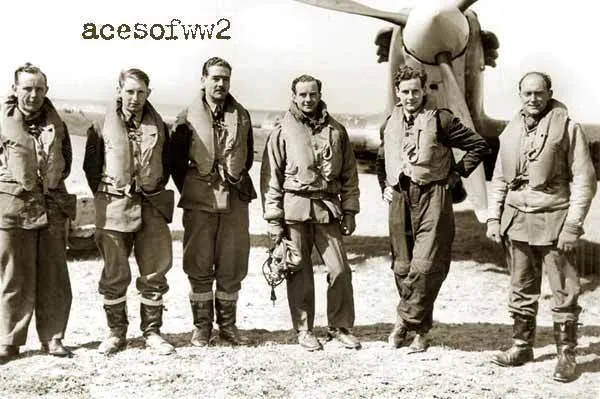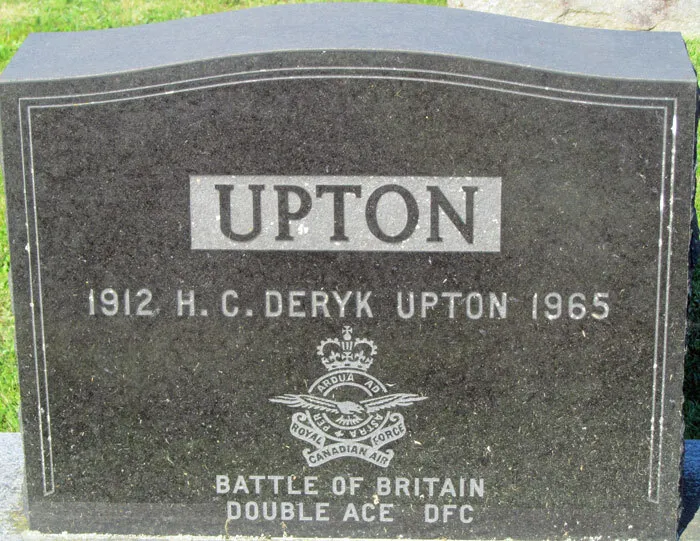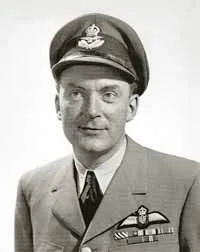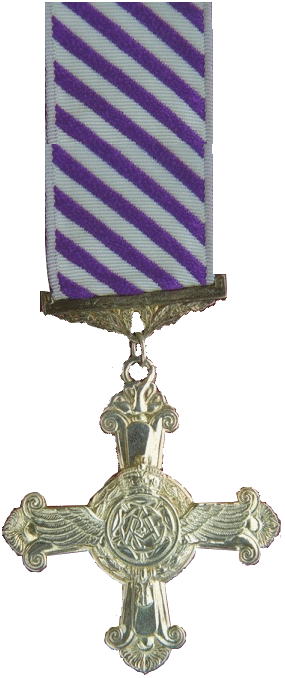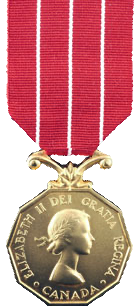The top Canadian scorer during the Battle was Flight Lieutenant H. C. Upton of No. 43 Squadron, RAF, who claimed 10.25 aircraft shot down.
Hamilton Charles Upton, also known by the name Deryk, was born in Manchester on 13th March 1912 but was brought up in Vancouver, Canada. He joined the RAF on a short service commission in June 1939 and after completing his training he joined 43 Squadron on 8th February 1940.
On 12th July Upton shared in destroying a He111 and on 8th August he claimed two Ju87s destroyed and probably another. Immediately after destroying the third Ju87, Upton's engine seized and he glided back to the Isle of Wight and made a forced-landing at Ford Farm, Whitwell. On 13th August Upton claimed a Do17 destroyed, on the 15th a Ju 88 and on the 16th three Ju87s. In this combat, his oil system was damaged by return fire and he made a crash-landing on Selsey Beach in Hurricane P3216. Upton claimed a Ju 87 and a Bf 109 destroyed on 18th August and a Bf 110 on 4th September.
He was posted to 607 Squadron at Tangmere on 24th September 1940 as a Flight Commander. In late 1940 Upton went to instruct at an OTU at Montrose. He later also instructed at 39 SFTS Swift Current, Saskatchewan, Canada.
He was awarded the DFC (gazetted 29th April 1941), receiving the medal from King George VI. After some time in hospital he returned to operational duties as a Fighter Controller with 84 Group, Tactical Air Force following the invasion of France.
Upton suffered from injuries sustained in his crash-landings and was subject to headaches and blackouts. It was later discovered that he also had a fractured coccyx. Surgeries to remove the infected tailbone caused lifelong health problems.
In 1945 Upton transferred to the RCAF, serving with it until 1953 and leaving with the Canadian Decoration. He began a career in radio with a new station, CFJB, in Brantford, Ontario. In 1955 Upton and his family moved to Truro, Nova Scotia where he worked as sales and advertising manager at CKCL for the rest of his life.
He died on 1st August 1965 of a brain aneurism, quite likely related to the head trauma he experienced during the Battle of Britain. Upton is buried in Robie Street Cemetery, Truro, Nova Scotia. (The Battle of Britain London Monument)
source: Harold A Skaarup
